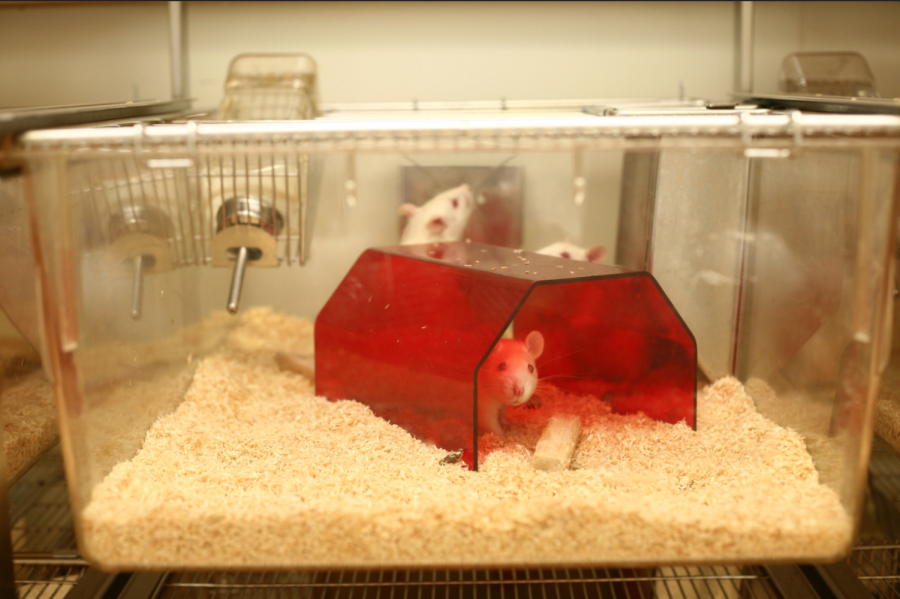Let’s Put an End to Animal Testing
Your basic eyeshadow from Maybelline cosmetics may seem like a harmless product, but behind those blue sparkles is an ugly truth. During the product testing process, some animals have their fur shaved off and proceed to have chemicals applied to their raw skin, while others are forced to inhale toxic fumes.
I used to think that animal testing consisted of small procedures done on rabbits or mice to see if a beauty product was safe or not. However, after the research I’ve conducted, there is so much more to the situation. According to People for Ethical Treatment of Animals (PETA), over 90% of animal experiments don’t lead to human trials, 89% of animal studies can’t be reproduced (meaning that the procedures done are usually fatal), and 95% of drugs that pass on animals don’t pass on humans.
This goes to show how useless testing on animals is, and why it should come to a complete end. One may argue that animal testing is okay because without them we wouldn’t have all the medications, vaccines, and products that are used on a day-to-day basis. However, most of these products tested on animals might work on them but not on us, and there are other ways to research whether a product is safe to use.
As I’ve stated before, I previously thought experiments were only done on rabbits and mice, but in actuality, they are done on dogs, cats, fish, pigs, and primates as well. Each animal is used for different experiments, but is put through the same trauma and despair as the last. Mice and rats, for example, have toxins injected into their bodies as well as certain types of cancers. They are also put through electroshock therapy to see how their minds work; mice and rats are not protected by the law, so while undergoing these procedures, they aren’t being anesthetized. As for rabbits, they are put through the Draize eye irritancy test, which involves receiving syringes full of cleaning and personal care products on their eyes. Dogs are purposely infected with parasites for future use by researchers. Pigs, on other hand, are mostly used for military purposes, undergoing unrequited surgeries against their will. Fish, as well as cats, have holes put into their brains with metal coils being stuck there until they die, and primates are used to see how well vaccines and other medicines work while also having holes drilled into their skulls. Some might agree with animal testing because it’s quick, efficient, the testing doesn’t take much time, and the subjects are easy to work on. These experiments may be quick and cheap, but again, half the time they don’t actually work and there are more accurate results by testing on non-animals.
Most experiments done on animals aren’t pertinent to human well-being, and they don’t contribute definitively to human advances. Over 40 countries have banned animal testing or at least restricted it. However, in Europe and other countries, animal testing is still completely legal. The only reason why it’s done is that it’s seen as the most ethical way to safely test a product. Most of these experiments are done just to see what happens rather than testing for effective results. Scientists are basically just doing it for fun, knowing they don’t work. One may argue that we can use small animals for animal testing, such as fish or mice due to their lack of emotions. However, recent studies show that in fact, even small animals can feel. In some ways animals and humans are alike, believe it or not; although they may not be as advanced as us, they feel the same emotions as we do and they feel the same pain as we do. However, people ignore the fact that creatures’ lives are taken advantage of as victims of research, chemical burns, euthanization, wounds, and shots – all while having no say in the matter.
I do agree that every new product and cure for an illness should be tested to be sure it’s safe for the use of humans. However, there are safer alternatives. One way is using cell cultures, which are 3D printed models of organs grown in a lab. These can copy parts of the lungs, kidney, and stomach. Also, researchers can use human tissues, whether they are healthy or not, which can even be donated from surgeries. This provides scientists with a more accurate depiction of human biology. Now, living in a world run by technology, we can create computer models to simulate aspects of the human body and conduct virtual experiments. One more alternative that not many people are talking about is human-patient simulators. These are robots that can breathe, bleed and even ‘die.’ If scientists use these less harmful and more innovative methods, millions of animals’ lives are saved, plus our US tax dollars can go into technology that benefits our well-being.




























